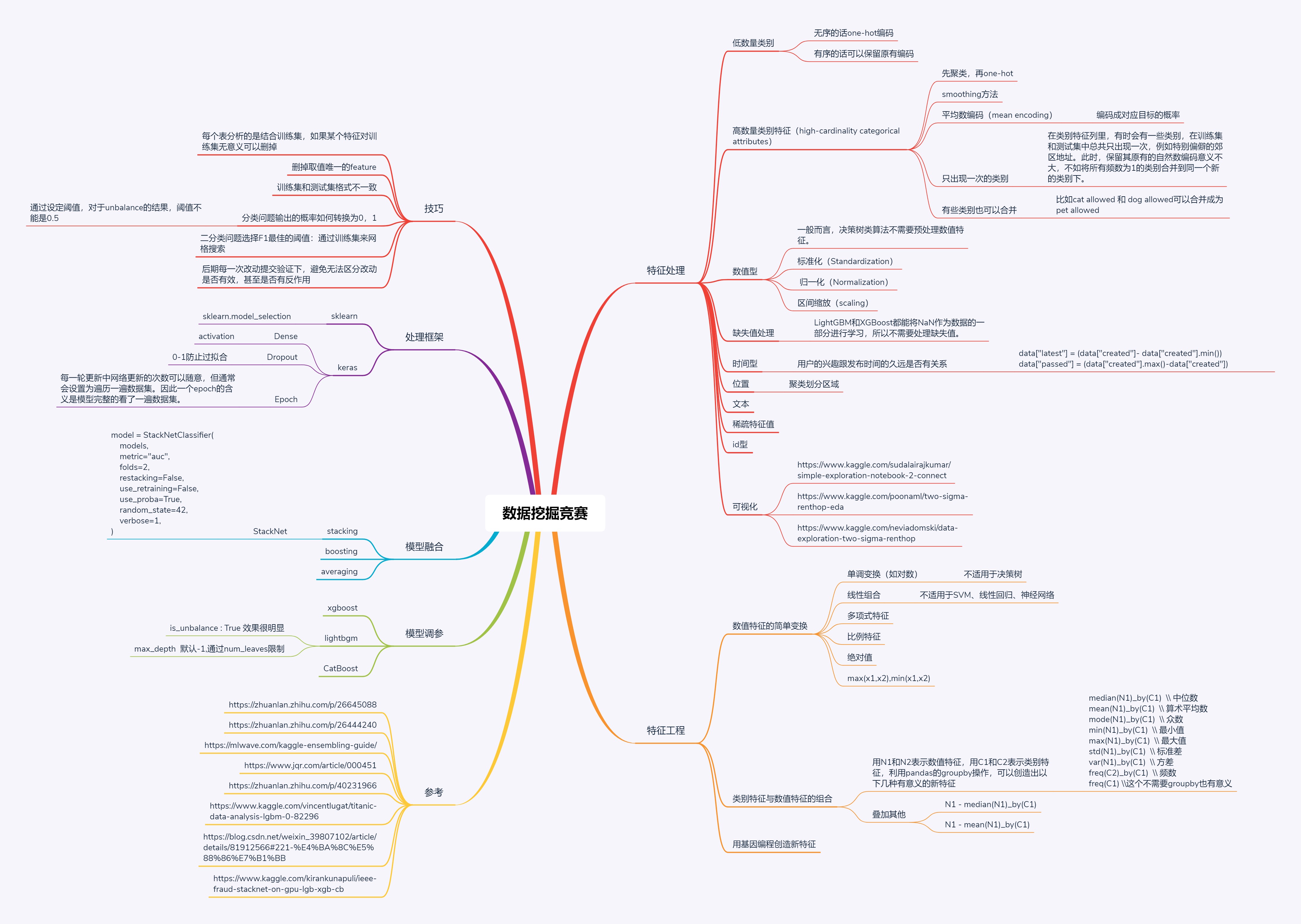
Pandas常用操作
去重
1 | BASE_EXCG = BASE_EXCG.drop_duplicates(subset=None, keep='first', inplace=False) |
合并
1 | IDV_TD = pd.merge(IDV_TD, BASE_EXCG, left_on='CCY_CD', right_on='CCY_LETE_CD', how='left') |
删除
1 | IDV_TD.drop(['RAT_CTG','FXDI_SA_ACCM'], axis=1,inplace =True) |
运算
1 | IDV_TD = IDV_TD.eval('CRBAL_RMB = CRBAL * RMB_MID_PRIC') |
索引重置
1 | IDV_TD_after.reset_index() |
修改列名
1 | IDV_TD_after_after.rename(columns= lambda x:x if x=='CUST_NO' else IDV_TD_'+x).to_csv("./data/IDV_TD_out.csv",index = False) |
修改字段类型
1 | IDV_CUST_BASIC['OCP_CD']=IDV_CUST_BASIC['OCP_CD'].astype(str) |
填充NaN
1 | IDV_CUST_BASIC['OCP_CD'].fillna('NULL',inplace=True) |
groupby+join
1 | IDV_TD_group = IDV_TD.groupby(['CUST_NO','DATA_DAT']) |
新建一列
1 | IDV_TD_after_after['HAS_IDV_TD'] = 1 |
常用编码方式
One-hot
1 | #one-hot encoding |
Label
1 | #label encoding |
Mean encoding
1 | #mean encoding |
使用:
1 | #mean-encoding |
模型
训练集验证集划分
1 | from sklearn.model_selection import train_test_split |
LightGBM
1 | import lightgbm as lgb |
导出特征重要性
1 | importance = gbm.feature_importance() |
保存模型
1 | gbm.save_model('./model.txt') |
KFOLD
1 | from sklearn.model_selection import KFold |
StackNet
1 | import lightgbm as lgb |